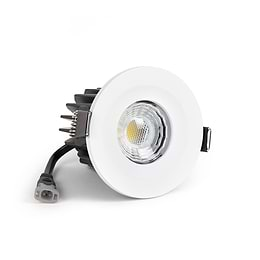Kitchen Lighting Guide
Kitchen Lighting Guide
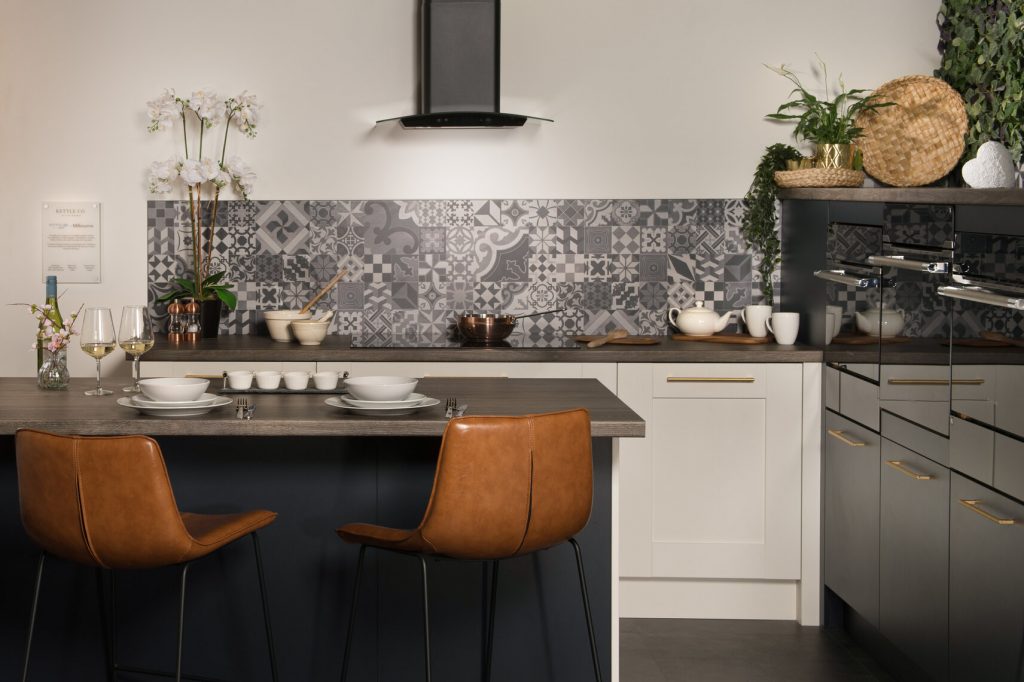
Pictured: Kettle Kitchens Co
A kitchen is the heart of any home. A place where a lot of time can be spent together socialising, eating and even, working!
There's no denying it's the functional hub of a home. Lighting your kitchen effectively is so important. Combining practicality and style, whilst creating the right atmosphere.
Here are some key considerations to make when choosing the right lighting for your kitchen.
What Are The Different Types of Kitchen Lighting?
It's important to know the different types of kitchen lighting. This will enable you to make the right lighting choice based on what it will mostly be used for.
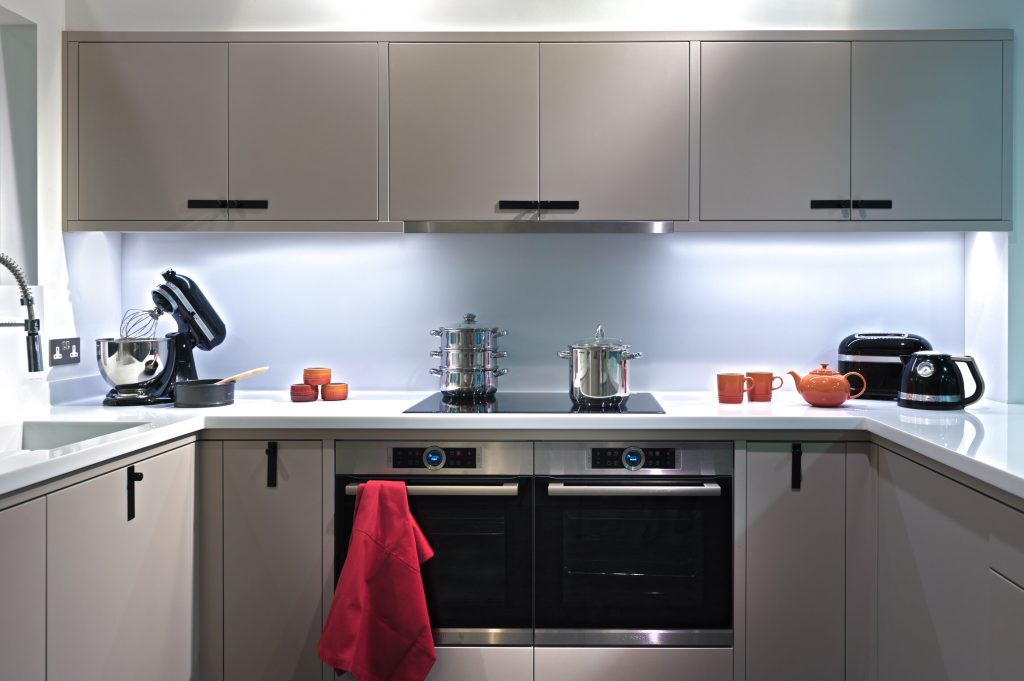
Task Lighting
Task lighting refers to lighting that illuminates onto a target object that will help you to carry out a particular task. In a kitchen, task lighting is a popular choice on main working areas such as a hob or kitchen worktop.
Bright, focused task lighting will make your life much easier in a kitchen. This can be achieved with carefully placed LED downlights, especially tiltable downlights which allow you to focus the beam on the working surface.
Downlights are fantastic for creating effective task lighting. In addition, LED strip lights above worktops are a great alternative for lighting up the areas that need it most.
Lieber GU10 downlights are a great lighting choice for a kitchen. Available in a wide range of different metals and in both square and circles. Fire rated to 60 and 90 minutes, and robustly built with 2 connector clips for easy installation.
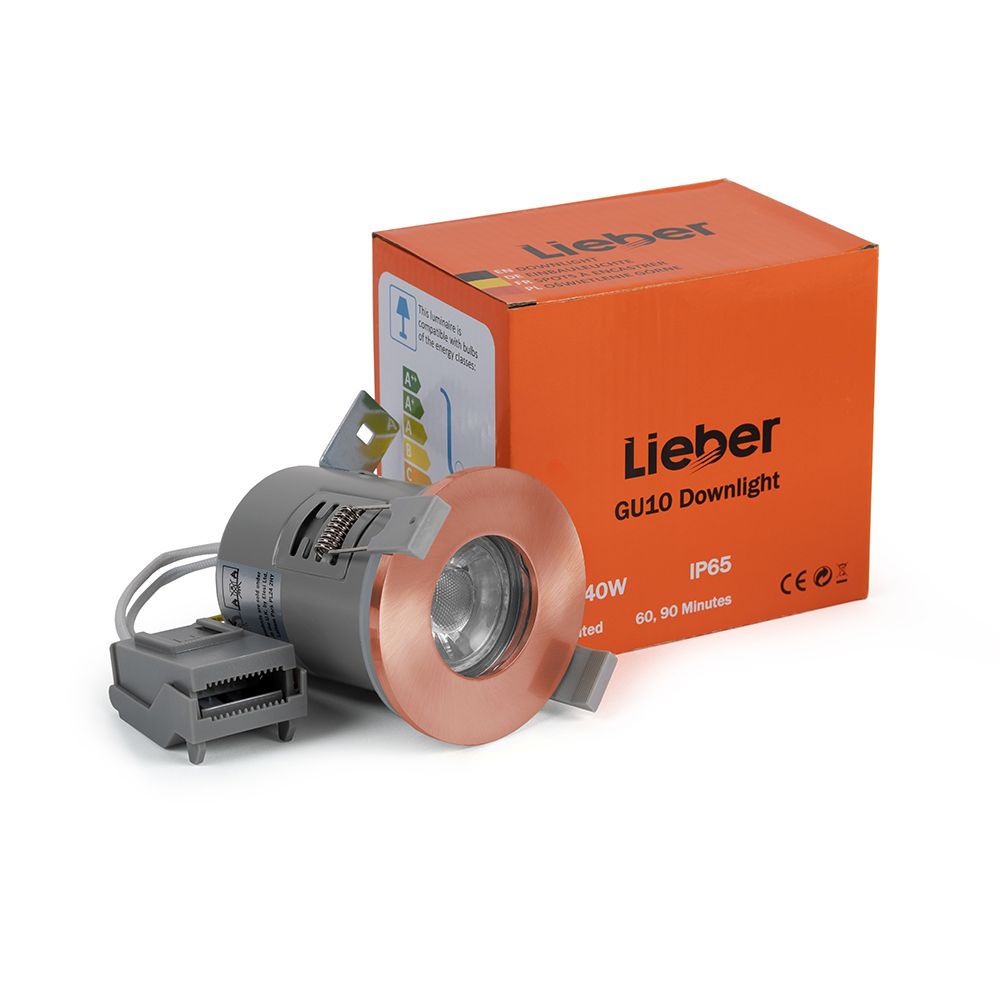
High CRI Kitchen Lighting
Colour rendering index is a measurement that shows how colours look under a light source, when compared with sunlight. CRI ranges from 0-100 and can have a significant impact on the representation of the room and objects in it.
This is especially important for kitchen task lighting, as you will need to clearly see what you are doing, as well as the colour of the food you are preparing.
Many downlights on the market have a CRI below 90. In 2020 it was estimated that over 90% of domestic downlights available on the UK market provided a CRI of less than 82. In 2021, Soho Lighting launched their range of High CRI LED Downlights.
Ambient Lighting
Ambient lighting is the foundation layer of lighting in a room that makes a room usable. If you have a kitchen island, this could be created easily with a row of pendant lights. Appropriately placed downlights will also help to complete your ambient lighting scheme in your kitchen.
Adding a dimmer switch to your ambient lighting is a perfect idea. This allows you to adjust the lighting to meet the mood. Dimming lights is the perfect way to set the mood for a relaxing dinner.
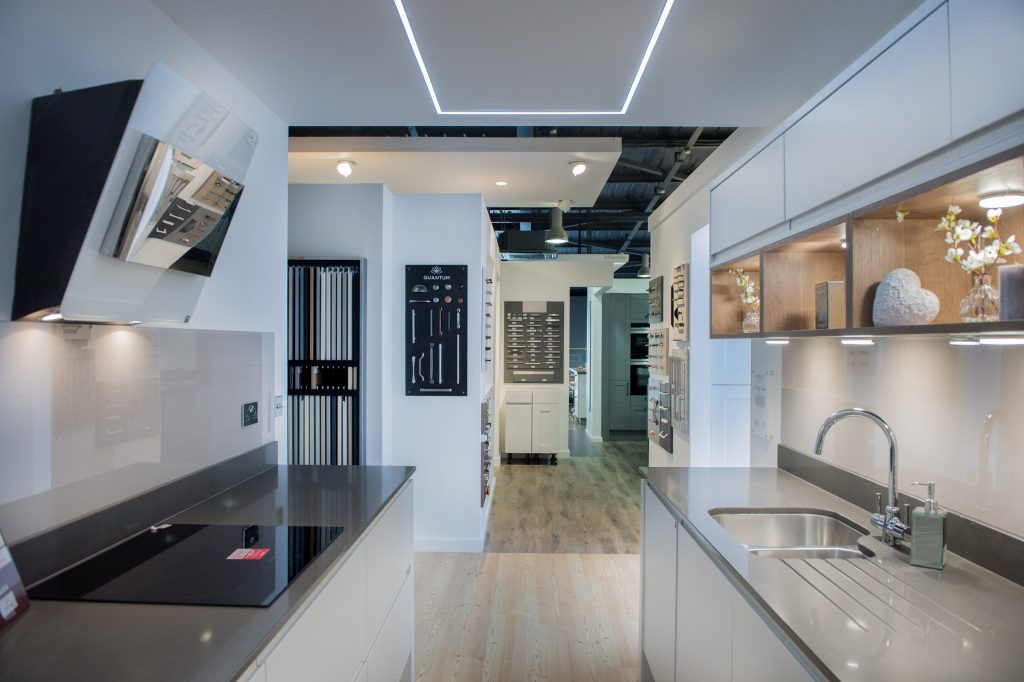
Accent Lighting
Accent lighting is all about reigning in your creativity and having some fun with your kitchen lighting plan. Accent lighting can also help to create ambient lighting, especially through the use of hanging pendant lights or a sconce. Adding pops of different colour to your kitchen with accent is a great addition to a lighting scheme in a contemporary kitchen.
A contemporary technique for adding accent lighting, is using LED strip lights above and underneath cabinets to accentuate their outline.
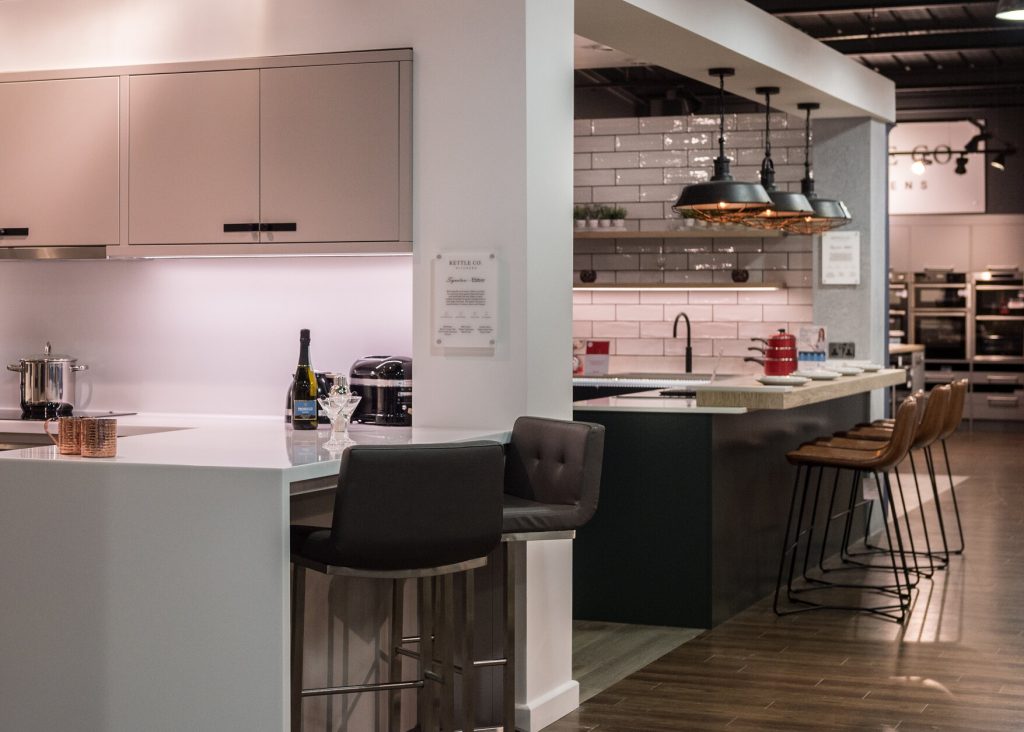
Accent lighting is designed for that bridge between functionality and style. There is more of a design factor that comes with this lighting style than task and ambient, but still a very important addition to a kitchen.
What Is The Best Colour Temperature For Kitchen Lighting?
Colour temperature is a really important deciding factor when choosing lighting for your kitchen. There are three main colour temperatures to choose from when selecting lighting for a room. These range between a warm white that can be orange in appearance up to the closest match to natural lighting.
In a kitchen, a bright white/cool light colour temperature, around 4100 Kelvin is a desirable choice. Close to daylight, this cool light will give the kitchen a whiter, more energetic feel. Creating a light, airy and social space.
However, colour temperatures do vary depending on the type of kitchen lighting style that you opt for.
Task lighting uses between 4000K to 5000K colour temperature for that natural day light setting. This is the ideal type of lighting when being used to work in.
When creating an ambient lighting setup in your kitchen, a colour temperature between 2800K to 3500K will help to set the mood. Whilst accent lighting uses between 3000K to 4000K for a warm to cool white colour transition.
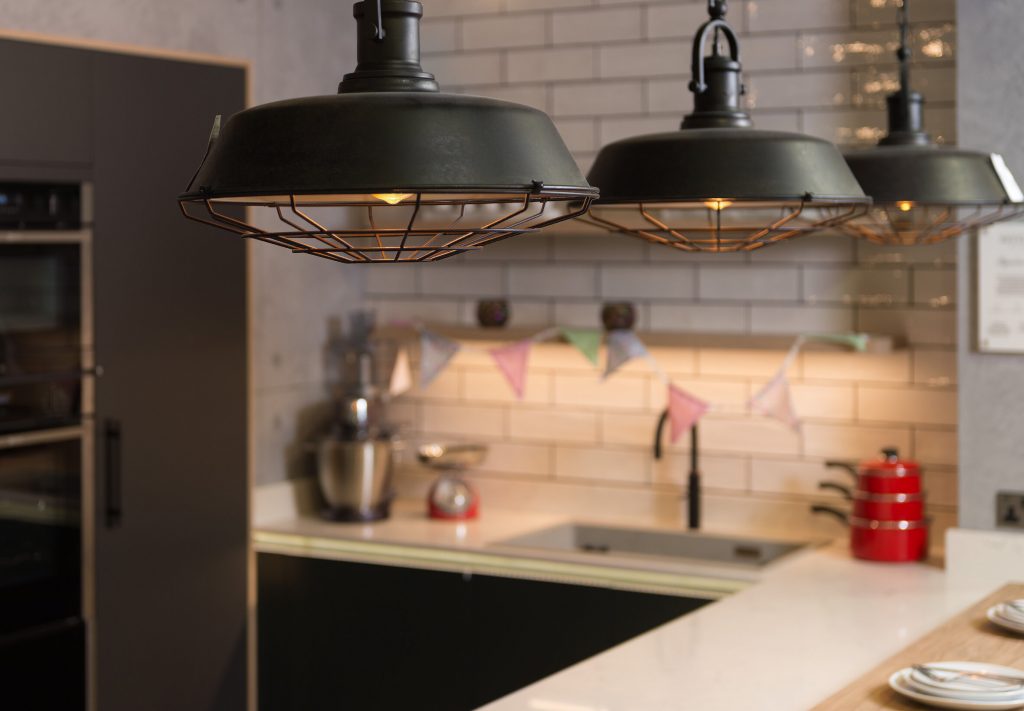
What Is The Rule of Odds?
When it comes to lighting a kitchen, it's all about odds. The rule of odds is a design concept which proclaims that positioning an odd number of lights is more attractive than an even amount.
There's more science behind it than just hearsay though. In the example of a breakfast bar, you would normally hang a set of three pendant lights. The placement of three pendant lights creates space and air around the lights. As opposed to two lights which create a boxed in and divided area, closing off the room.
The symmetry a row of 3 or 5 pendants creates allows for a harmonious, and well balanced area between the spaces, rather than subjects.
With a bit of direction, you can select the perfect lighting for your kitchen that will fulfil functionality, style and practicality.
[related_products]


